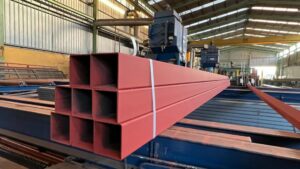At this week’s meeting of the OECD Steel Committee, participants expressed concerns about the sharp downturn in world steel markets, Kallanish reports.
According to data presented by the OECD, overcapacity this year could surpass 560 million tonnes, up from the 520mt registered in 2021. The increasing trend of overcapacity is expected to continue. The OECD noted, for example, that Chinese overcapacity decreased during the 2016-2019 period only to start increasing again from 2020. Now Chinese capacity has reached 1.15 billion tonnes.
“Much of the world’s capacity growth in recent years has been concentrated in the Middle East, South Asia, and Southeast Asia. Many of the new installations in Asia have been focused on the coal-intensive steel production process,” the OECD said. “World steelmaking capacity is expected to increase in 2022 for the fourth year in a row, rising by almost 30mt to a level of 2.4 billion tonnes. Of further concern are up to 144mt of additional capacity that may come on stream during the 2023-25 period, representing a further 5.9% increase over the 2022 global capacity level.”
The increase in overcapacity is fuelled also by the expectation of a downturn for steel consumption.
“The global steel market recovery from the Covid-19 downturn was unfortunately short-lived. While market conditions improved in 2021, a significant turn for the worse has occurred during the course of 2022, particularly as a consequence of the ongoing war in Ukraine,” OECD said. “Global steel consumption has contracted significantly in the first half of this year due to the rapidly deteriorating economic environment.”
Going forward, participants at the meeting agreed that it is vital to continue addressing structural problems in the industry, particularly related to subsidisation.
“With excess capacity expected to increase in the coming years, delegates discussed the need to refrain from measures that would exacerbate over-supply pressures in markets, including subsidies and other support measures that stimulate steel production, production, and capacity targets that will likely overshoot demand prospects, and restrictive trade policies on raw materials that artificially lower the costs of steel production,” the OECD explained in a note.
Emanuele Norsa Italy






